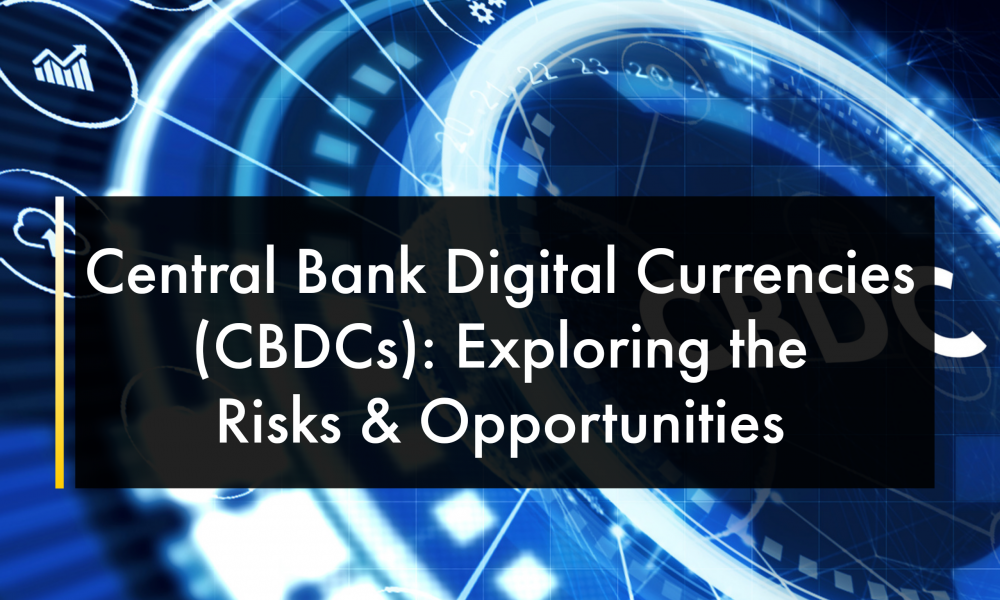The Rise of Central Bank Digital Currencies (CBDCs): Revolutionizing the Financial Landscape

Introduction
Central Bank Digital Currencies (CBDCs) have emerged as a focal point of discussion in the realm of monetary policy and financial innovation. With the advent of digital technologies, central banks around the world are exploring the potential of CBDCs to modernize payment systems, enhance financial inclusion, and address challenges posed by cash usage and cryptocurrencies. This article delves into the latest developments in CBDCs, with a focus on China's digital yuan, and examines their potential impact on the traditional financial system.
https://blockverse.vc/central-bank-digital-currencies-cbdcs-revolutionizing-the-global-financial-landscape/:max_bytes(150000):strip_icc()/terms_c_central-bank-digital-currency-cbdc_FINAL-671aefb2905b407583007d63fa46e49d.jpg)
Understanding Central Bank Digital Currencies
Central Bank Digital Currencies (CBDCs) are digital representations of a country's fiat currency issued and regulated by its central bank. Unlike cryptocurrencies such as Bitcoin, which operate on decentralized networks, CBDCs are centralized and typically utilize distributed ledger technology (DLT) for transactions. CBDCs can take various forms, including retail CBDCs accessible to the general public and wholesale CBDCs used for interbank settlements and financial market transactions.
https://www.investopedia.com/terms/c/central-bank-digital-currency-cbdc.asp
The Rise of CBDCs: Latest Developments
In recent years, central banks worldwide have accelerated their efforts to explore and develop CBDCs in response to technological advancements, changing consumer preferences, and the rise of private digital currencies. China has been at the forefront of CBDC development, with the People's Bank of China (PBOC) piloting the digital yuan in several cities since 2020. The digital yuan, also known as the Digital Currency Electronic Payment (DCEP), aims to enhance the efficiency and security of payment systems while providing the central bank with greater control over monetary policy and financial stability.
Other countries, including Sweden, the Bahamas, and the European Union, have also made significant strides in CBDC research and experimentation. The European Central Bank (ECB) recently launched a two-year investigation phase for the digital euro, soliciting feedback from citizens, industry stakeholders, and policymakers. Meanwhile, the Bahamas became the first country to roll out a retail CBDC, known as the Sand Dollar, to promote financial inclusion and resilience in the face of natural disasters.https://www.linkedin.com/pulse/rising-cbdcs-karlo-su%C3%B1ol/
Impact on the Traditional Financial System
The rise of CBDCs has significant implications for the traditional financial system, including monetary policy, financial stability, and the banking sector. One of the key benefits of CBDCs is their potential to improve the efficiency and inclusiveness of payment systems, reducing transaction costs and settlement times for both consumers and businesses. By providing a digital alternative to cash, CBDCs can also help address concerns related to financial exclusion and the decline of cash usage in an increasingly digital economy.
Moreover, CBDCs offer central banks greater visibility and control over the money supply, enabling more targeted monetary policy interventions and enhanced oversight of financial transactions. However, the introduction of CBDCs could also pose challenges to the banking sector, particularly if they lead to disintermediation and a reduction in demand for traditional bank deposits. To mitigate these risks, central banks may need to carefully design CBDC frameworks and collaborate with commercial banks to ensure a smooth transition to the digital era.
https://defi-planet.com/2022/01/the-implications-of-cbdcs-for-the-banking-industry/
China's Digital Yuan: A Case Study
China's digital yuan initiative provides valuable insights into the potential opportunities and challenges associated with CBDCs. The digital yuan aims to modernize China's payment infrastructure, enhance financial inclusion, and counteract the dominance of private digital payment platforms such as Alipay and WeChat Pay. Through a series of pilot programs and trials, the PBOC has tested the usability, security, and scalability of the digital yuan in real-world settings, laying the groundwork for its eventual nationwide rollout.
However, the digital yuan also raises concerns regarding privacy, surveillance, and the concentration of power in the hands of the central bank. Unlike cash transactions, which are anonymous and untraceable, digital yuan transactions can be monitored and tracked by the central bank, raising potential privacy issues for users. Moreover, the centralization of financial data within the central bank's infrastructure could pose cybersecurity risks and vulnerabilities to external threats.

Looking Ahead: The Future of CBDCs
As central banks continue to explore and experiment with CBDCs, the future of money is poised for transformation. CBDCs have the potential to revolutionize the way we conduct transactions, manage financial assets, and interact with the global economy. However, realizing this potential will require careful consideration of regulatory, technological, and societal factors to ensure that CBDCs deliver on their promise of a more efficient, inclusive, and resilient financial system.https://cryptotvplus.com/2023/07/cbdcs-exploring-the-risks-opportunities/
Conclusion
Central Bank Digital Currencies (CBDCs) represent a paradigm shift in the world of finance, with profound implications for monetary policy, financial stability, and the banking sector. The latest developments in CBDCs, exemplified by China's digital yuan, underscore the growing importance of digital currencies in the digital age. By analyzing the opportunities and challenges associated with CBDCs, policymakers, industry stakeholders, and consumers can work together to shape a future where digital currencies coexist harmoniously with traditional financial assets, driving innovation and fostering financial inclusion on a global scale.







































